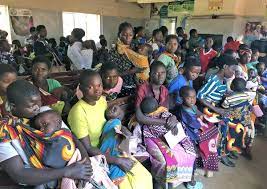
Situation at a Glance
Description of the Situation
On 25 November 2023, under the IHR (2005), the United Kingdom notified the WHO of a human case of influenza A(H1N2)v virus infection. The case reported onset of mild symptoms on 5 November. He visited his general practitioner on 9 November; during this visit, a respiratory sample was collected and further analyzed as part of the national routine influenza surveillance programme. On 13 November, the sample was sent to United Kingdom Health Security Agency (UKHSA) laboratories and tested positive on 23 November for influenza A(H1N2)v virus, using reverse transcription polymerase chain reaction (RT-PCR). The sample was further characterized by whole genome sequencing and results were available on the same date. On 25 November, a follow-up RT-PCR test was performed and tested negative for influenza. The case is now fully recovered.
Further laboratory analyses conducted at the Worldwide Influenza Centre at the Francis Crick Institute (a WHO Collaborating Centre) and the World Organization for Animal Health (WOAH) avian and swine influenza reference laboratory at the Animal and Plant Health Agency, indicated that this influenza A(H1N2)v virus belongs to the swine influenza virus genetic clade 1B.1.1. Similar A(H1N2) viruses from this genetic clade have been previously detected in pigs in the United Kingdom. However, this is the first time a virus from this swine genetic clade has been detected in a human in the United Kingdom.
According to ongoing investigations, pig farms are located within a few miles of where the case resides; however, the case reported no direct exposure to pigs, pets, or farms. The source of infection is currently under investigation and contact tracing is continuing.
Epidemiology
Influenza A viruses are enzootic in swine populations in most regions of the world. When an influenza virus that normally circulates in swine is detected in a person, it is called a “variant influenza virus”. A(H1N1), A(H1N2) and A(H3N2) are major subtypes of influenza viruses circulating in pigs and occasionally infect humans.
Sporadic human infections with swine influenza viruses have been reported since the late 1950s, usually after direct or indirect exposure to pigs or contaminated environments. Since 2018, sporadic influenza A(H1N2)v cases among humans have been detected in other countries in Europe (Austria, Denmark, France and the Netherlands), the Americas (Brazil, Canada and the United States of America), Asia (China) and in Australia. Infections in humans have primarily been acquired through direct contact with infected animals or contaminated environments. Risk factors include proximity to infected pigs or visiting locations where pigs are exhibited. However, in some cases, no known exposure to swine was reported.
Swine-origin influenza virus infections in humans tend to result in mild clinical illness, although some cases have been hospitalized with more severe disease and some have been fatal. Evidence of human-to-human spread of swine-origin influenza viruses is limited, and human-to-human onward transmissions are very rare or limited to one or two generations of infection.
Laboratory testing with RT-PCR or other rapid molecular influenza assays (with similar high sensitivity and high specificity) are recommended when available. However, prompt treatment based on antivirals and supportive care should be the priority. WHO has produced guidelines for laboratory diagnosis of influenza and clinical management, and through the Global Influenza Surveillance and Response System (GISRS), WHO closely monitors avian, swine and other zoonotic influenza viruses.
Public Health Response
WHO is closely collaborating with national authorities to monitor the situation. UKHSA has established an enhanced national incident team that is working with partners to investigate this incident and deliver a rapid response. Ongoing response activities by the UKHSA, the United Kingdom National Health Service and international partners include:
- Local epidemiological investigations and public health management, have been implemented, including case investigation, contact tracing and enhanced local surveillance for persons with occupational exposure to pigs/farms and the wider local community.
- Laboratory investigations are being conducted in collaboration with the UKHSA, Animal and Plant Health Agency (APHA) and the Crick Institute laboratories to further understand the virological characteristics of this virus.
- Communications activities, including ensuring proportionate communications to partners within government, with the National Health Service and international partners, have been implemented.
WHO Risk Assessment
Influenza viruses circulate in swine populations in many regions of the world. Depending on geographic location, the genetic characteristics of these viruses differ. Most human cases result from exposure to swine influenza viruses through contact with infected swine or contaminated environments, although some cases have been reported without an apparent source of exposure to swine in the weeks prior to illness onset. Because these viruses continue to be detected in swine populations worldwide, further human cases following direct or indirect contact with infected swine can be expected.
Current evidence suggests that these viruses have not acquired the ability to sustain transmission among humans. There has been limited, non-sustained human-to-human transmission of variant influenza viruses, although ongoing community transmission has not been identified.
This is the first swine influenza A(H1N2)v case reported in the United Kingdom. There is no clear indication of direct contact with pigs or any ill individuals. Though the source of infection is unknown at this time, the virus is closely aligned to that circulating in the swine population in the United Kingdom. Several previous variant cases have also not had clear exposure histories to swine and there was no evidence of sustained human-to-human transmission in these cases. Limited human-to-human transmission may have played a role, but there is no definitive evidence.
Further virus characterization is ongoing. National routine surveillance indicators do not show any unusual increases in respiratory illness in the local population. The risk of there being additional human cases associated with this event appears to be low – though the possibility of limited person-to-person transmission cannot be excluded at this stage.
The risk assessment will be reviewed should further epidemiological or virological information become available.
WHO Advice
People with any respiratory symptoms should continue to follow the existing guidance, seek healthcare and avoid contact with other people while symptoms persist, particularly if the people they are coming into contact with are elderly or have existing medical conditions.
Surveillance:
- This case does not change the current WHO recommendations on public health measures and seasonal influenza surveillance.
- WHO does not advise special traveler screening at points of entry or restrictions concerning the current situation of influenza viruses at the human-animal interface.
- Due to the constantly evolving nature of influenza viruses, WHO continues to stress the importance of global surveillance to detect virological, epidemiological and clinical changes associated with circulating influenza viruses that may affect human (or animal) health and timely virus sharing for risk assessment.
Notification and investigation:
- All human infections caused by a novel influenza subtype are notifiable under the IHR (2005) and State Parties are required to immediately notify WHO of any laboratory-confirmed case of a recent human infection caused by an influenza A virus with the potential to cause a pandemic. Evidence of illness is not required.
- In the case of a confirmed or suspected human infection caused by a novel influenza virus with pandemic potential, including a variant virus, a thorough epidemiologic investigation of a history of exposure to animals, travel, and contact tracing should be conducted. The epidemiologic investigation should include early identification of unusual respiratory events that could signal person-to-person transmission of the novel virus. Clinical samples collected from the time and place of the case should be tested and sent to a WHO Collaboration Centre for further characterization.
Prevention measures:
- General hygiene measures, such as regular hand washing before and after touching animals and avoiding contact with sick animals, should be adhered to.
- Travelers to countries with known outbreaks of animal influenza should avoid farms, contact with animals in live animal markets, entering areas where animals may be slaughtered, or contact with any surfaces that appear to be contaminated with animal feces. Travelers should also wash their hands often with soap and water. Travelers should follow good food safety and good food hygiene practices. Influenza viruses that infect pigs are different from human influenza viruses. There is no vaccine for zoonotic influenza infection licensed for use in humans. However, some partners have developed candidate vaccine viruses for novel zoonotic influenza viruses with pandemic potential as part of pandemic preparedness activities.
- Usually, influenza vaccines against human influenza viruses are generally not expected to protect people from influenza viruses that normally circulate in pigs. Although the seasonal influenza vaccine does not protect against swine viruses, WHO recommends seasonal influenza vaccination to avoid severe disease.
- In health-care settings, syndromic screening of health and care workers, patients, and visitors for symptoms of respiratory infections is recommended, accompanied with capacity and resources to implement transmission-based precautions to reduce the risk of health care-associated infections. If a case of a novel acute respiratory infection is suspected, please refer to advice in the WHO guideline for infection prevention and control of epidemic-and pandemic prone acute respiratory infections in health care.
WHO does not recommend any travel and/or trade restrictions for the United Kingdom based on the currently available information.
Further Information
- UK Health Security Agency Press Release: UKHSA detects human case of influenza A(H1N2)v – GOV.UK (www.gov.uk)
- WHO. Influenza (Avian and other zoonotic). Available at: https://www.who.int/news-room/fact-sheets/detail/influenza-(avian-and-other-zoonotic)
- Risk assessment of influenza at the human-animal interface: Global Influenza Programme (who.int)
- Case definitions under the International Health Regulations 2005: Case definitions for the four diseases requiring notification to WHO in all circumstances under the IHR (2005)
- International Health Regulations (2005) – Third edition
- World Health Organization (2017). Terms of Reference for National Influenza Centers of the Global Influenza Surveillance and Response System
- WHO Public health resource pack for countries experiencing outbreaks of influenza in animals: revised guidance
- WHO. Influenza virus infections in humans October 2018
- World Health Organization. (2018). Protocol to investigate non-seasonal influenza and other emerging acute respiratory diseases. World Health Organization. https://iris.who.int/handle/10665/275657
- World Health Organization. (2011). Manual for the laboratory diagnosis and virological surveillance of influenza. World Health Organization. https://iris.who.int/handle/10665/44518
- World Health Organization. (2022). Guidelines for the clinical management of severe illness from influenza virus infections. World Health Organization. https://iris.who.int/handle/10665/352453.
- WHO’s Global Influenza Surveillance and Response System (GISRS)
- WHO (2022). Transmission-based precautions for the prevention and control of infections: aide-memoire
- WHO (2014). Infection prevention and control of epidemic-and pandemic prone acute respiratory infections in health care
- World Organization for Animal Health (WOAH), Swine Influenza: Swine influenza – WOAH – World Organisation for Animal Health
- World Health Organization (2018) Influenza virus infections in humans: influenza_virus_infections_humans_oct_18.pdf (who.int)
Citable reference: World Health Organization (1 December 2023). Disease Outbreak News; Influenza A(H1N2) variant virus infection – United Kingdom of Great Britain and Northern Ireland. Available at: https://www.who.int/emergencies/disease-outbreak-news/item/2023-DON496










